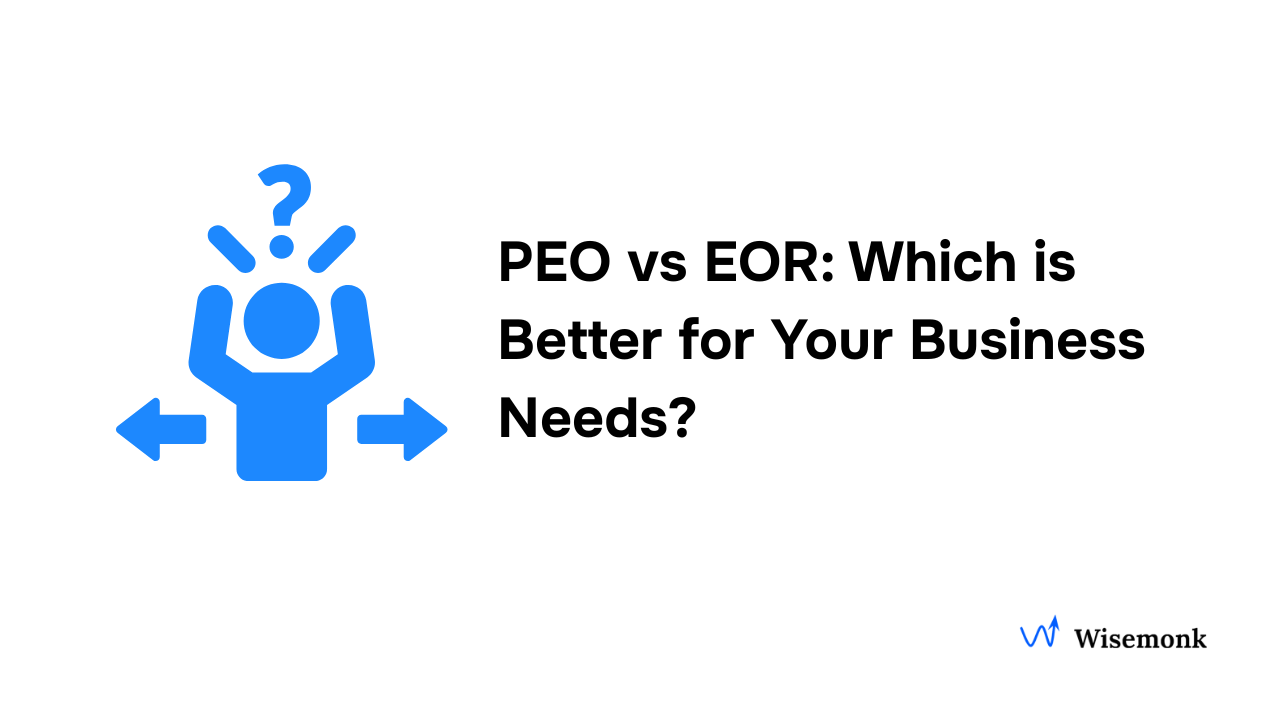Looking to simplify employee classification with an EOR in 2025? Worker classification has become a major compliance issue as companies expand globally. Misclassifying employees vs contractors can lead to IRS audits, DOL penalties, back taxes, and lost benefits for workers. Studies show that between 10% and 30% of U.S. employers audited have misclassified workers, costing billions in back taxes and penalties(National Employment Law Project). Globally, governments are tightening rules, from FLSA reforms in the U.S. to new social security mandates in Europe, making misclassification a serious compliance risk. An Employer or Record (EOR) can simplify this complexity by ensuring accurate worker status determination, saving you audits, fines, and headaches. In this guide, we’ll walk through how to avoid misclassification, understand global and U.S. compliance essentials, and leverage EOR services for smooth, lawful hiring worldwide.
What are the fundamentals of employee classification?[toc=Fundamentals]
Getting worker classification right isn’t just about ticking boxes; it shapes how businesses manage global teams, taxes, and compliance. Yet, every country defines the line between employees and independent contractors differently. Let’s break it down.
Employee vs Contractor Criteria
Globally, four core factors dominate employee classification EOR:
- Control – If the company sets the work schedule, methods, or tasks, the worker is often an employee. Contractors or gig workers generally operate independently.
- Independence – Contractors usually have multiple clients, market specialized skills, and cover their own business expenses. Employees rely on one employer and work under a defined employment relationship.
- Financial Risk – Independent contractors manage their own tax registrations, social security contributions, and equipment costs. Employees, meanwhile, get regular payroll processing, paid leave, and benefits like health insurance through the legal employer.
- Permanence – Permanent employees and full-time workers are long-term fixtures in a business, while contractors or temporary employees handle project-based work.
Legal Tests and Standards
Every country applies its own legal framework to decide whether someone is an employee or an independent contractor. Based on our research, three key regions often set the tone for global classification rules.
- United States
- The IRS Common Law Test: Focuses on behavioral control, financial control, and the working relationship. If the employer directs how tasks are done, the worker is likely an employee.
- The Department of Labor’s 2024 Rule (under the Fair Labor Standards Act): Emphasizes whether workers are truly “in business for themselves.” It directly affects minimum wage, overtime pay, and eligibility for benefits.
- European Union
- The EU distinguishes between employees vs self-employed workers based on economic dependence. Employees enjoy paid leave, health protections, minimum wage, and social security entitlements. Self-employed individuals bear their own business risks and tax issues.
- United Kingdom (IR35)
- The IR35 regulation determines if contractors are genuinely independent, or if they are “disguised employees.” Inside IR35 status means workers are taxed like employees, affecting both the client company and the worker.
In short, the legal employer must respect each jurisdiction’s rules, misapplying criteria leads to misclassification penalties and compliance issues.
Common classification factors
Despite differences in legal systems, regulators worldwide look at similar patterns when conducting worker status determination.
- Work hours and schedules imposed by the company strongly suggest employment. Independent workers usually set their own.
- Benefits and entitlements- if someone receives paid leave, overtime pay, health insurance, or social security contributions, they are typically classified as employees.
- Client exclusivity- employees generally serve one client company, while contractors often manage multiple clients simultaneously.
- Provision of resources - when tools, IT systems, or workplaces are provided by the employer, it leans toward an employment relationship.
- Nature of relationship- A permanent employee is part of business continuity; temporary employees or contractors are tied to projects or specific scopes.
Regulatory Framework Overview
Employee classification sits at the intersection of labor laws, tax rules, and social security systems, and each country enforces them differently.
- Labor laws set core protections like minimum wage, maximum hours, overtime, and paid leave. For example, the US follows the Fair Labor Standards Act (FLSA), while EU nations comply with the EU Working Time Directive.
- Employment contracts must clearly document the arrangement. Vague or missing terms often increase misclassification risks.
- Social security & payroll systems require employers to fund contributions for employees, while independent contractors handle their own tax registrations, insurance, and pensions.
- Taxation frameworks are closely watched. Misclassified workers may trigger back taxes, unpaid contributions, and penalties.
Globally, enforcement is rising, HMRC in the UK with IR35, EU reforms for platform workers, and the US Department of Labor all tightening compliance checks.
Many companies underestimate these differences. An Employer of Record (EOR) helps firms ensure compliance, avoid hidden fees, and expand globally without setting up local entities.
What are the consequences of employee misclassification?[toc=Misclassification Consequences]
Misclassifying workers is more than a simple error, it causes serious financial, legal, and reputational risks globally. Here’s the real impact on businesses.

Legal Penalties
Governments enforce compliance with hefty fines. In the U.S., the IRS may charge penalties up to 20% of wages plus unpaid FICA taxes for misclassification. The Department of Labor (DOL) can pursue enforcement actions under the Fair Labor Standards Act (FLSA) for unpaid wages and overtime. Penalties may also arise from Affordable Care Act (ACA) violations when benefits are improperly withheld. In the UK, HMRC fines companies under IR35 regulations, while across the EU, countries impose penalties tied to unpaid taxes and benefits.
Back Taxes and Benefits
Misclassified workers might claim retroactive benefits such as health insurance and overtime pay, triggering unexpected liabilities. For instance, FedEx agreed to pay $240 million to settle driver misclassification lawsuits in 20 states covering roughly 12,000 drivers.
Audit Risks and Investigations
Regulatory audits are on the rise globally. In 2024, the Wisconsin Supreme Court upheld a ruling that Amazon Flex drivers are employees, making them eligible for unemployment insurance and potentially costing Amazon over $200,000 in premiums.
Reputational Damage
Misclassification also damages credibility. Losing trust among employees, clients, and investors hampers global hiring and expansion. Companies known for dodging labor laws face tougher scrutiny and challenges attracting talent.
Case Study: The Cost of Misclassification
Power Design, Washington, DC (2024)
Power Design, a major electrical subcontractor, settled for $3.75 million after the government found widespread employee misclassification impacting wages and benefits.
UK Research and Innovation (UKRI) (2021)
UKRI paid £36 million in back taxes following an IR35 misclassification investigation, highlighting the severe financial risks of failing to comply with local employment laws (UK Government IR35 info).
In our experience, properly addressing classification through an Employer of Record (EOR) is essential to avoid costly penalties and build a compliant, motivated global workforce.
What are the benefits of EOR classification?[toc=EOR Classification Benefits]
Using an Employer of Record (EOR) transforms employee classification from a compliance headache into a strategic advantage. Here’s why many companies trust EORs to navigate the complexities of global and US employment laws.

Automatic Employee Status
Partnering with an Employer of Record (EOR) ensures workers are instantly classified as full employees under the legal employer. This guarantees valid employment contracts, consistent payroll processing, and access to statutory benefits like health insurance, paid leave, social security contributions, and overtime pay. It eliminates the costly risk of employee misclassification especially when managing international hiring across borders, whether you’re hiring contractors, looking to hire full time employees, or building teams of EOR employees in new markets.
Compliance Assurance
EORs keep pace with evolving local labor laws, tax regulations, and social security obligations in multiple jurisdictions. US companies benefit from EOR handling W-2 alignment, payroll taxes, and Affordable Care Act (ACA) compliance. This expertise minimizes exposure to IRS audits, Department of Labor (DOL) investigations, and costly misclassification penalties, helping companies stay compliant globally.
Risk Mitigation
The EOR acts as the official legal entity, absorbing risks such as tax liabilities, labor law violations, and misclassification fines. This protects businesses from legal disputes and fines, facilitating seamless global expansion without local entity setups or hidden fees.
Professional Guidance
EOR providers offer vital support in employment contracts, benefits administration, and payroll processing, freeing internal HR and finance teams from compliance burdens. Their localized expertise simplifies managing diverse global employees while maintaining adherence to complex local employment laws and worker classification rules.
Partnering with an Employer of Record ensures your overseas workforce is properly classified, compliant, and supported, removing uncertainty and accelerating growth.
How do global classification variations impact compliance?[toc=Global Variations]
Worker classification differs widely across countries. Knowing these key points helps avoid costly compliance issues when managing international teams.
- Country-Specific Rules:
Each country has unique laws. For example, Germany offers strong protections for permanent employees through the Part-Time and Fixed-Term Employment Act. India updates protections under the Industrial Employment Act, especially for contract workers (source: Indian Ministry of Labour). Definitions of full-time, part-time, paid leave, and minimum wage vary significantly worldwide. - Cultural Employment Differences:
Local culture shapes work relationships. Japan’s lifetime employment model grants long-term contractors near-employee benefits (source: Ministry of Health, Labour and Welfare, Japan). In contrast, the US and many European countries have growing gig economies relying on flexible contractor arrangements, impacting classification and benefits. - Regulatory Updates:
Laws evolve fast. France recently expanded social security to some independent contractors (source: French Ministry of Labour). The EU’s Digital Markets Act boosts protections for gig and platform workers. Staying updated prevents misclassification risks. - Best Practice Adaptations:
Businesses succeed by using compliant contracts, conducting regular classification audits, and working with local experts or an Employer of Record (EOR) to navigate complex local labor laws and reduce risks (source: ILO Standards).
What are the best practices for employee classification?[toc=Best Practices]
Effective classification safeguards your business from compliance issues and builds a trustworthy workforce. Here are proven best practices that companies should follow.
Documentation Requirements
Maintain clear, compliant employment contracts and records of worker status decisions. Proper documentation supports your employee classification compliance and helps defend against audits or penalties.
Regular Compliance Reviews
Conduct routine audits of your worker classifications. In the US, frequently review IRS Form SS-8 guidance and stay updated on Department of Labor (DOL) rule changes to keep classification accurate.
Training and Awareness
Educate HR and management on worker classification rules and local labor laws. Awareness prevents mistakes and aligns practices with evolving legal standards.
Consistently applying these measures reduces misclassification penalties, audit risks, and legal issues, helping companies maintain a compliant, motivated global workforce.
Conclusion[toc=Conclusion]
Proper employee classification with an Employer of Record is critical to avoid costly misclassification penalties, legal risks, and compliance challenges. By understanding classification fundamentals, global variations, and best practices, companies can confidently manage a compliant, productive global workforce.
Wisemonk is a leading Employer of Record service provider that simplifies hiring globally by managing every facet of compliance and workforce management, enabling businesses to hire abroad without the need for a legal entity established in each country. Seamless onboarding and local employment compliance management
- Accurate payroll processing and statutory tax filings
- Comprehensive benefits administration including health insurance and paid leave
- End-to-end equipment procurement and management for remote teams
Beyond these, Wisemonk offers specialized support in background verification, contractor management, company registration, work permits and visa processing, and office setup assistance. This holistic service package empowers businesses to expand effortlessly and stay fully compliant across key global markets.
To get started with Wisemonk and transform your global hiring strategy, contact us today.




.webp)
.webp)
